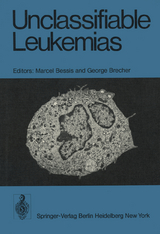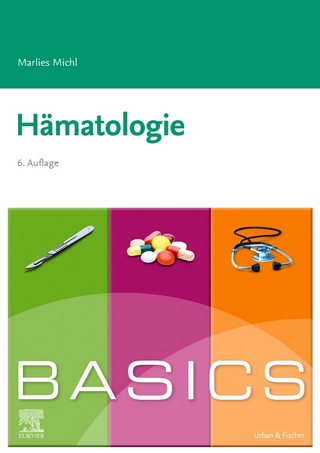Unclassifiable Leukemias
Springer Berlin (Verlag)
978-3-540-07242-3 (ISBN)
Section I: Present Practice of Classification, its Utility and Limitations.- Cytological Classification of Acute Leukemias. A Survey of 1400 Cases.- Classification of the Acute Leukemias.- Leukemic Lymphosarcomas: Respective Prognosis of the Three Types: Prolymphocytic, Lymphoblastic (or Lymphoblastoid) and Immunoblastic.- Search for Correlations between Cytological Types and Therapeutic Sensitivity of Acute Leukemias.- Answers to Submitted Questions.- Open Discussion of Section I.- Section II: New Techniques Used in Cytological Diagnosis.- Fluorescence Probe and Biochemical Characterization of Leukemic Cells.- Discussion.- Automated Cell Population Analysis.- Discussion.- The Use of B and T Membrane Markers in the Classification of Human Leukemias, with Special Reference to Acute Lymphoblastic Leukemia.- Discussion.- Volumetric Determinations of Blood Cells in Acute Lymphoblastic Leukemia.- Discussion.- Acute Leukemia Cytochemical Profile: Diagnostic and Clinical Implications.- Discussion.- B, T and "Null" Cell Leukemias. Electron Cytochemistry and Surface Morphology.- Discussion.- Giant Platelet Granules in Refractory Anemia (Preleukemia) and Myelomonocytic Leukemia: a Cell Marker?.- Discussion.- Inhibition of Time-dependent Enhancement of Amino Acid Transport by Leukemic Leukocytes: a Possible Index of the Sensitivity of Cells to Drugs.- Discussion.- Marrow Culture - a New Approach to Classification of Leukemias.- Discussion.- Cytogenetic Studies of Marrow and Peripheral Blood Granulocyte Colonies in Treated Chronic Myelogenous Leukemia (presented by G. Brecher) Discussion.- Cytogenetic Studies in Preleukemia: Studies before and after Transition to Acute Leukemia in 17 Subjects.- Discussion.- Correlated Cytogenetic and Ultrastructural Studies in Acute Leukemia(Abstract).- Discussion.- Section III: Pathophysiology of the Leukemic Cell.- Pathology of the Leukemic Cell or Reasons Why Some Leukemias are Unclassifiable.- Discussion.- Abnormal Neutrophils in Acute Myelogenous Leukemia: Identification of Subpopulations Based on Analysis of Azurophil and Specific Granules (Read by G. Brecher).- Significance of Cell Differentiation in Acute Myeloid Leukemia.- Discussion.- Different Cell Proliferation Models in Myeloblasts and Lymphoblastic Leukemia. Contribution of Cell Kinetics to the Classification of Acute Leukemias.- Discussion.- Clonal Evolution and Progression in Chronic Myeloid Leukemia.- Discussion.- Variations of the Proliferative Activity of Leukemic Myeloblasts Related to the Stage of the Disease.- Discussion.- Section IV: Summary and General Discussion.- Summing Up.- Summing Up.- On Classification of Leukemia.- General Discussion.
| Erscheint lt. Verlag | 1.11.1975 |
|---|---|
| Zusatzinfo | VIII, 272 p. 24 illus. |
| Verlagsort | Berlin |
| Sprache | englisch |
| Maße | 170 x 244 mm |
| Gewicht | 560 g |
| Themenwelt | Medizinische Fachgebiete ► Innere Medizin ► Hämatologie |
| Medizin / Pharmazie ► Medizinische Fachgebiete ► Onkologie | |
| Schlagworte | anemia • Blood • Cell • Chemistry • classification • Diagnosis • leukemia • Leukemias • Metabolism • Pathology • Physiology • Stem Cell |
| ISBN-10 | 3-540-07242-X / 354007242X |
| ISBN-13 | 978-3-540-07242-3 / 9783540072423 |
| Zustand | Neuware |
| Haben Sie eine Frage zum Produkt? |
aus dem Bereich




